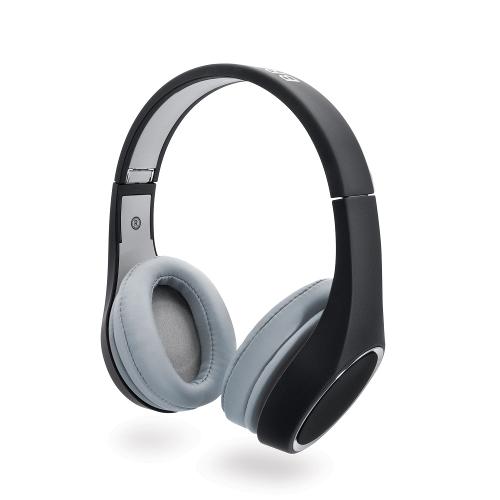
SPECS:
No written spec was found for the UMI-BTA9
WHERE TO BUY / COST:
http://amzn.to/2h6jhkA
$69.99 new ( often heavily discounted down to $25 or less )
OVERVIEW
Happy Chinese New Year! I am giving one last Chinese IEM a review because it's important to review not only the good headphones, but to cover some of the bad ones too. The UMI-BTA9 from UMIDIGI rests somewhere in between because there are aspects of it that I love and some that flat out are unforgivable. The UMI-BTA9 Bluetooth IEM is an in-ear built for lifting, exercising, and chatting on the move. It is advertised as a bassy IEM with “Noise Cancelling for class-leading wireless audio and optimal sound quality.” Does it deliver?
AESTHETICS

The BTA9 is simply designed and packed with features. It looks and feels solid although a tad light. The earhooks are comfortable, the cable only mildly microphonic, and the button layout superb. The IEM body that houses the electronics does feel cheap and I worry that the plastic may crack over time or if dropped onto a hard surface. The accessories are few with only small, medium, and large silicone tips available. I would have liked to see some Comply foam included as I had some discomfort and seal issues with the default tips due to the nozzle angle and a pair of foam tips would have solved the problem.

Everyone needed to get going is shipped with the BTA9 including the charge cable, tips, but sadly no hard case for travel. Attached to the IEM cable is a cable cinch which is must if you plan on exercising with any IEM. The nozzle bodies are small and only due to the angle did they become uncomfortable.

ACOUSTICS
With the primary concerns for comfort out of the way I tested the sound. Advertised as a bassy IEM I was expecting some serious bass bloat and distortion. Immediately the bass felt overwhelming, but that could just be because I am nowhere near a basshead. I spent extra time listening to the BTA9 because if you ignore the bass boost the mids and treble are good. The midrange, although 10% recessed for my taste, sounded clear and just about all of my hi-fi tracks kept me interested. The treble is rolled-off, but surprisingly mildly compared to other IEM’s that tout such serious bass like the Brainwavz M100. The bass on the BTA9 is boomy, but not as distorted and disruptive as the M100. Listening to Chateau Marmont by Maison Klaus from the Solar Apex –EP was engaging, fun, and only lightly rumbly. I never felt overwhelmed by a wall of bass from the BTA9 on this track.
I moved to Insible Sun’s Baby Deli the Police track to further test the bass and distortion. At 1:50 into the track the bass does distort and blur the midrange and treble making this track hard to listen to for more than a few seconds. Remarkably the treble was clear and only the upper registries distorting. Speaking of treble how did Peter Murhy’s Time Has Got Noothing To Do With It sound out of the BTA9? Surprisingly the chimes remained clear and only due to the recessed sound signature did the BTA9 fall short. Some tracks were just plain toe-tappingly fun with the BTA9. Muddy Waters’ Good Morning Little School Girl track made me focus on the rhythm and his voice and only once in a while did I realize how out of control the bass really sounds.
Other tracks like Rob McCoury’s Sugar Creek revealed the weaknesses of the BTA9. The bass simply overwhelms the rest of the instruments becoming fatiguing at times. It is the schism between good and bad bass that makes the BTA9 tricky to enjoy.

MIC TESTING
I always test the mic when included. So many cheap IEM makers decide to include a mic and so many fall flat on their face. The BTA9 is sadly a poor communication device because the mic is distorted and distant. The audio from the other person on the line comes through muddled and choppy. The MIC is not the best feature of the BTA9.
DURABILITY
I see not major flaws in the design other than the cheap plastic housing. Everything else including the cable feels well-made and durable. The lack of carrying case is a bummer because it not only protects the IEM’s during travel, but makes them easier to find and unsnag.
CONCLUSION
With no spec to compare against, no carrying case, and some serious issues with the mic I really do not recommend paying full price for the BTA9. At the time of this review it is on Amazon for under $25 which is good considering it delivers a Bluetooth IEM, a mic, all built for exercise or on-the-move listeners. Would I recommend it as a reference IEM, well no. It has too many flaws with distortion and accentuated bass to be considered hi-fi, but due to the quality of the bass boost I do recommend it over IEM’s like the M100 from Brainwavz because the bass I implemented well for a boosted IEM. The wireless range is small at about 15 ft through no doors. I found the signal dropping out just two rooms away with no doors closed. I think this is a non-issue for most people because most people will use it with the phone / portable nearby, but I do like to see longer range wireless in my Bluetooth devices. The bass for me was too fatiguing to listen for more than an hour and I worry about long-term hearing problems using such a bassy IEM. The BTA9 is certainly bassy and it does it pretty well for an IEM found under $25 much of the time.








































































































Increases the rating from 3 stars to 3.5 stars because there are no major faults, but the lack of low end control makes it sound bright and detailed.